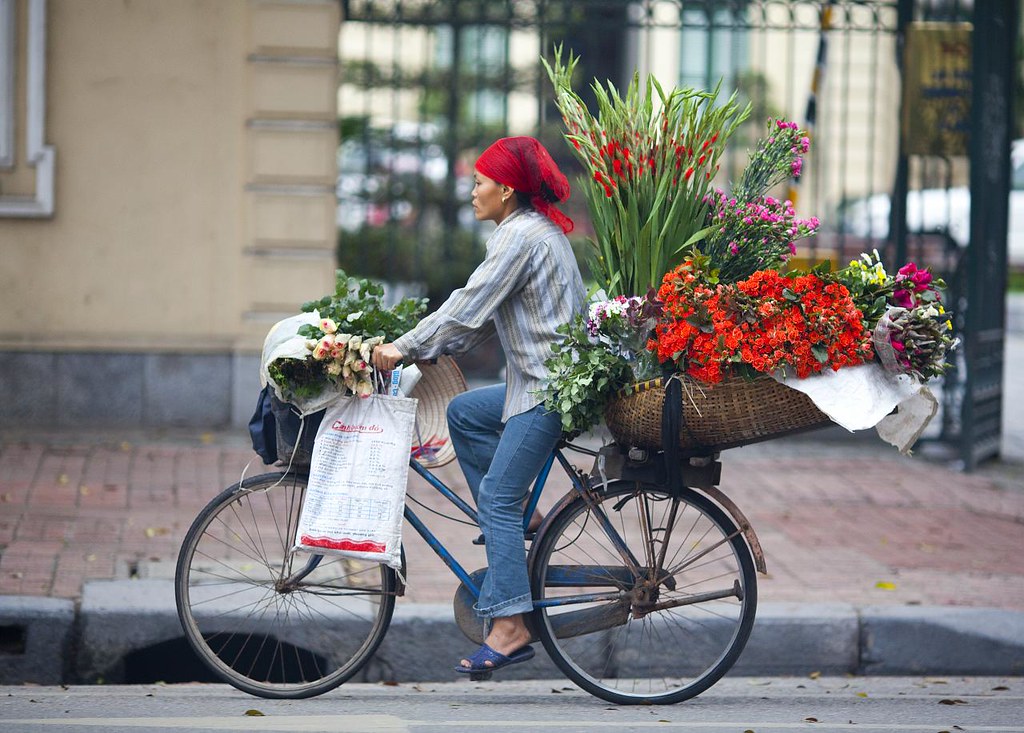Vietnam’s Fight Against TB with USAID Support

Vietnam, officially known as the Socialist Republic of Vietnam, is located in Indochina, an eastern peninsula edge of Southeast Asia. Vietnam’s bordering countries consist of Cambodia, China and Laos, and is an important partner for the United States (U.S.) in terms of trade. The country is reputable for its fertile grounds and deltas, providing its population with abundant resources to grow crops. Vietnam is also one of the few countries with the highest cases of tuberculosis in the world. With the help of a national program and USAID support, Vietnam is on track to combat tuberculosis.
Tuberculosis Endemic in Vietnam
According to the Pulitzer Center, tuberculosis is often treated successfully once diagnosed in patients; however, efforts to detect and prevent the disease in Vietnam are deficient by comparison. Reasons for poor prevention and detection can be attributed to the country’s overall economic state. Being able to effectively combat tuberculosis means having the resources to provide education about the disease, sufficient tests and medication.
If the disease continues to reach more people and evolve, there is concern that a stronger form of the disease, MDR-TB may become more widespread. MDR-TB, or Multidrug-Resistant TB, is a type of tuberculosis that is resistant to the most potent drugs typically used to treat the disease (Isoniazid and Rifampin). MDR-TB has a higher mortality rate than normal tuberculosis. According to Vietnam’s WHO medical officer, tuberculosis is a neglected disease, even with a chunk of financing provided by The Global Fund. This is because most of the funds are directed toward HIV and malaria efforts rather than tuberculosis.
The concern of tuberculosis is not limited to those within Vietnam but also extends to foreigners who travel from developed countries. In the West, there is an attitude about tuberculosis that points to a lack of concern since the disease doesn’t pose a major risk amongst developed nations. Therefore, unaware travelers may increase the risk of bringing more strains of tuberculosis to Vietnam.
Vietnam’s Government and Programs
Vietnam’s National Tuberculosis Control Programme (NTP) originated in 1986 with guidelines including standard protocol treatment across the nation, tuberculosis control systems incorporated into the country’s primary health care system and diagnostic direct smear examinations.
Further, the formation of the NTP meant communal health workers within various districts were trained and received treatment and detection supplies. As a result, around 99% of Vietnam’s communities utilized the NTP policies and regulations by the year 2000. The national program gained traction in the late 1900s and was eventually given priority amongst national health care programs, further receiving support from the Dutch government.
Vietnam has also developed a national commission for resources which fosters collaboration amongst various sectors to end tuberculosis. Vietnam’s goal is to end tuberculosis by 2030, and in order to do so, the country is committed to strengthening its technological and scientific innovations.
To create better access to tuberculosis care, Vietnam’s government decided to provide insured services for tuberculosis patients in all provinces of Vietnam. To achieve this, the government widened the Social Health Insurance plan to cover tuberculosis treatment and prevention. In 2022, Vietnam’s Social Health Insurance covered all expenses related to tuberculosis.
USAID Support
USAID is providing assistance in fighting tuberculosis through Vietnam’s National Tuberculosis Program by effectively implementing diagnostic strategies of Double X, which consists of a rapid detection instrument and a chest X-ray. The rapid detection technology, Xpert MTB/RIF, has a high level of sensitivity compared to conventional sputum smears. Xpert MTB/RIF identifies the bacteria Mycobacterium tuberculosis or MTB as well as resistance to rifampicin, an antibiotic used to treat mycobacterial infections.
Traditionally, tuberculosis detection tools involve sputum smears, a test that measures a type of bacteria, acid-fast bacilli (AFB), which causes the disease. However, traditional sputum smears lack sensitivity compared to rapid detection technology in that confirmation of tuberculosis requires at least 10-100 AFB/ml.
Among seven provinces, one that has benefited from USAID support in combating tuberculosis is An Giang, a southern region in Vietnam. An Giang has one of the highest cases of tuberculosis, and in executing the Double X plan of action, a few districts in An Giang province have experienced higher tuberculosis detection. In 2020, patients within three districts in An Giang were tested using the innovative X-ray and detection tools of Double X, leading to more than 80% increase in the detection of tuberculosis within the province since 2019.
In order to effectively implement Double X, the USAID Sustainable HIV and Tuberculosis Response from Technical Assistance (SHIFT) collaborated with Vietnam’s NTP to train health care professionals in health facilities, focusing on areas in Vietnam with patients, not within the NTP system such as those with respiratory symptoms, diabetes or pneumonia.
Results from these studies and the implementation of the Double X program show the efficacy and impact these tools have. The USAID support in technology and science dedicated to early detection of tuberculosis evidently has made a difference in Vietnam’s goal to end tuberculosis by the year 2030.
Looking Ahead
It is evident that Vietnam’s national and governmental efforts to combat the tuberculosis endemic have resulted in innovations in detection, prevention and treatment tools. The USAID/SHIFT implementation of the Double X strategy in collaboration with the NTP has been essential in accelerating and assisting the country’s goal of ending tuberculosis by 2030.
– Bianca Roh
Photo: Flickr
